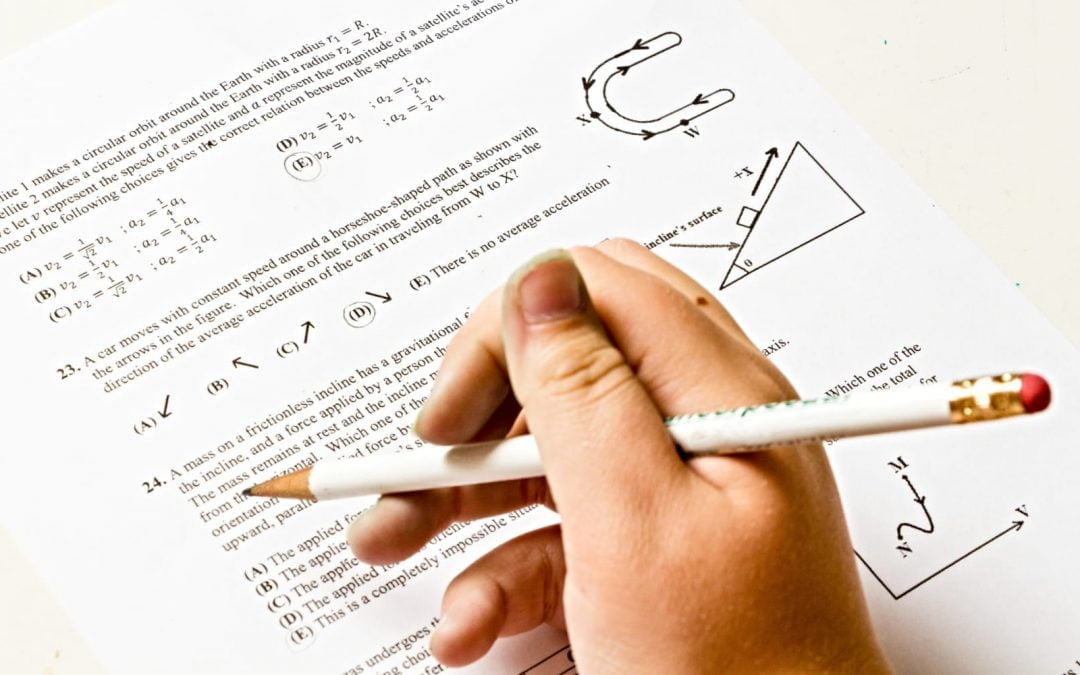Standardized testing is making headlines in Texas, with legislators considering tying increased funding for K-12 schools to test results.
“Gov. Greg Abbott and Lt. Gov. Dan Patrick have said they want to avoid ‘throwing’ money at schools without demanding better results,” the Texas Tribune reported. “New House Speaker Dennis Bonnen called for increasing public education funding while getting a ‘return on that investment. And that return is producing children who can read, write and do math.’”
Such “outcomes-based funding” was recommended in a report published on Dec. 31, 2018, by the Texas Commission on Public Education. Funding has been determined by student enrollment in all previous budgets.
While the commission recommended that funding “should be calculated in such a way as to reduce the importance of any one assessment,” education advocates worry that this will further increase the stakes for scores on the state’s standardized tests and lead to other unintended consequences, such as furthering economic inequities between districts.
This is a troubling proposition, which is also disingenuous because funding cuts to public education made during the Great Recession have yet to be fully restored.
Another proposal in Texas is to get rid of the state’s current standardized tests, known as STAAR.
I sympathize with this idea, but I think a standardized test can be useful in assessing student progress with two caveats: (1) it is treated as one metric equal to other assessment tools, and (2) it is designed to test students at grade level in a way that average students could achieve a passing score.
These Texas proposals bring to mind headlines that arise every few years proclaiming that U.S. students don’t stack up well compared to international students.
Typically, it is cited as evidence of our nation’s “broken” or “failing” education system.
Consider, for example, this February 2017 Pew Research Center report: “U.S. Students’ Academic Achievement Still Lags That of Their Peers in Many Other Countries.”
Or this March 2017 article in The Atlantic: “Why American Students Fall Short of International Peers: Examining Poor School Performance in the U.S.”
Looking at the actual data, you find that U.S. students generally have average scores on international standardized tests.
One commentator used a sports metaphor to describe how U.S. students are doing compared to international peers. “The U.S. is in the playoffs, but it’s not the top-seeded team.”
Apparently, not being at or almost at the top of the list is interpreted as “failing,” “lagging behind” or “falling short” to politicians and pundits alike.
So, let’s take a look at three international tests often cited as evidence of deficiencies in U.S. public schools.
First, there is the Programme for International Student Assessment, or PISA, which assesses math, science and reading. International students took the latest version in 2018, but results won’t be published until December 2019.
Out of 71 educational systems that participated in the 2015 PISA test, U.S. students ranked 40th in math, 25th in science and 24th in reading.
Put another way, the U.S. scored better than 31 nations in math, 46 in science and 47 in reading.
Second, Trends in International Mathematics and Science Study, known as TIMSS, assesses the math and science knowledge of fourth- and fifth-grade students. The next round of testing will take place this year, with results published in late 2020.
In 2015, U.S. fourth-graders ranked 10th out of 47 educational systems in science scores. In math, they ranked 14th out of 48, tying with Denmark.
U.S. eighth-graders ranked 11th out of 37 educational systems on science scores, and 10th out of 46 in math scores.
A third international test is Progress in International Reading Literacy Study, or PIRLS, which assesses international reading ability of fourth-grade students. The U.S. ranked 15th out of 50 educational systems in 2016, with the next PIRLS test to be conducted in 2021.
Regular assessment of educational progress within a nation and between nations provides helpful benchmarks.
Yet, too much emphasis and enacting legislation based largely on standardized test scores and international rankings are unwise.
After all, the effectiveness of standardized tests in measuring student achievement has been questioned for years (see here and here).
Further, could some (most?) of the “chicken little” reactions to test scores stem from believing that the U.S. was once a leader in international standardized test scores and has fallen behind?
The reality? U.S. students have never led the pack on international tests (see here and here).
Data included in a January 1992 report from the National Center for Education Statistics (NCES) summarized how U.S. students did on international tests from the 1960s to the 1980s:
- Math in the 1960s: U.S. eighth-graders ranked 11th out of 12 educational systems, and 12th graders ranked 12th out of 12.
- Math in the 1980s: Out of 20 educational systems, U.S. eighth-graders ranked 10th (arithmetic), 12th (algebra), 16th (geometry), 18th (measurement) and eighth (statistics). Out of 15 educational systems, 12th-graders ranked 12th (number systems), 14th (algebra), 12th (geometry) and 12th (calculus).
- Science in the 1960s-1970s: U.S. 10-year-olds ranked fourth out of 17 educational systems and seventh out of 19 among 14-year-olds while 12th-grade students ranked 14 out of 19.
- Science in the 1980s: U.S. 10-year-olds ranked eighth out of 15 educational systems in science and 14th out of 17 among 14-year-olds while 12th-graders ranked 14th out of 14 systems in biology, 12th in chemistry and 10th in physics.
- Math and science in 1988: U.S. 13-year-olds ranked 12th out of 12 educational systems in math and ninth out of 12 in science.
By some measures, it could be said that U.S. students are performing better on international testing scores now than in the past.
Is the U.S. public school system perfect? Of course not. Is it broken and failing as some would have you believe? Absolutely not.
Let’s be sure to affirm the hard work of teachers who daily encourage students to learn and grow not only in knowledge but also as productive citizens and compassionate humans.
They are shaping future leaders of our nation and world, so we need to be cautious with the words we use to describe the work they are doing, and we need to be certain that the means by which we assess their job performance is accurate, fair and constructive.


